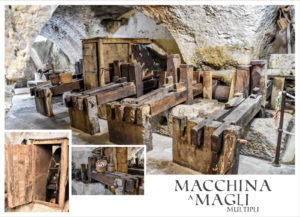What we are going to illustrate is the process by which the sheet of handmade paper of the type called “bombycina or bambagina or bambacina” was produced in Cartiera Milano.
The rags that were used in the manufacture of handmade paper could be linen, hemp cotton, jute: excluding those of animal origin, and silk, both for the stiffness of their fibers, which was ill-suited to making paper, both because in the leaching operation they were altered and destroyed. The rags having the fibers almost free from incrustations, their transformation into paste required only a cleaning and a destruction of the fabric to isolate the fibers. In the transformation of the rags into paper the first operation that was carried out was their cleaning followed by hand cutting and at the same time the separation from patches, seams, hems, buttons, all those rigid and hard parts that could damage not only the product but the machine itself.

At the end of this first phase there was the “leaching“, in special tanks.
The aim was to free the rags from impurities such as fatty substances that could not be removed otherwise. Once the leaching was completed, they were washed to free them from the lye and other impurities that had not yet been removed. This was followed by fraying, the function of which was to destroy all traces of fabric without the filaments being cut. This treatment served as a preparation for another work, the refining in which these filaments were in turn reduced into fibres suitable for making paper. The filamentous mass that was obtained by fraying was called “frayed” or “half paste”, as opposed to the whole paste that was obtained by refining thanks to huge wooden hammers that beat and shred the rags previously collected in stone fleece.
Paper processing vat
The mixture obtained, then diluted with water, was ready to be processed. The whole dough was taken with special wooden drawers and immersed in the vat (a tank lined with majolica inside). Safflower immersed a frame in the vat, the bottom of which, formed by a tightly meshed wire mesh, collected a quantity of pulp and distributed it in a mould; when the water was poured, what remained wasa thin layer of material.
The sheet of paper was then placed on a wool felt called pontoon and covered with another felt. The sheets were then stacked together and subjected to a press for the elimination of residual water. The last stage of paper processing consisted of taking the paper to dry in special spreaders.


